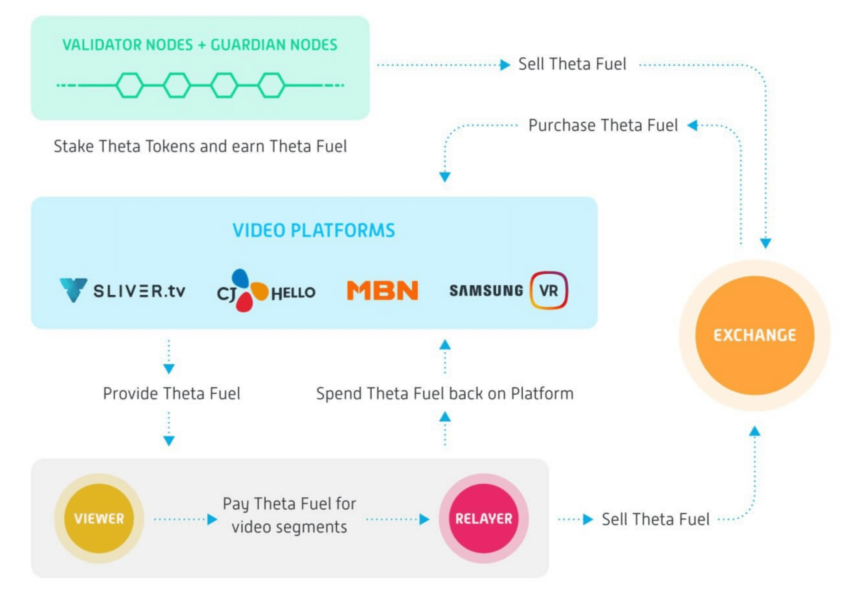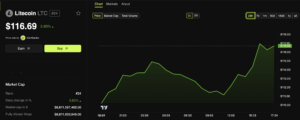
Theta Network is emerging as a revolutionary alternative to traditional platforms like Netflix and YouTube. But the critical question remains whether it can truly compete with these established giants.
In an exclusive interview with BeInCrypto, Jieyi Long, CTO at Theta Labs, explained how the Web3 firm aims to disrupt video delivery through decentralization, enhanced security, and novel incentives for content creators and viewers.
A Decentralized Video Streaming Network
According to Long, Theta Network, developed by Theta Labs, offers a fundamentally different approach to video streaming.
“Theta Network consists of three main components: the Theta protocol, which enables decentralized video delivery; the Theta blockchain, which records and validates transactions; and the Theta token, which incentivizes users to contribute their resources,” Long told BeInCrypto.
This decentralized model contrasts sharply with the centralized servers used by Netflix and YouTube. By leveraging a peer-to-peer network where users share their excess bandwidth and computing power, Theta reduces dependency on centralized servers.
Such a setup enhances network reliability and decreases buffering times, improving video quality.
“The decentralized nature of Theta’s platform ensures increased reliability and eliminates the dependence on a single server,” Long emphasized.
Security is a critical concern for any digital platform. Theta Network addresses this with a hybrid consensus mechanism combining proof-of-stake (PoS) and Byzantine Fault Tolerance (BFT). Validators stake their tokens to secure the network, which discourages malicious activities and ensures transaction validity.
“By utilizing end-to-end encryption and advanced cryptographic techniques, user privacy is protected, reducing the risk of unauthorized access or data breaches,” Long said.
This heightened security can appeal to users wary of data breaches and privacy issues plaguing other platforms.
The Unique Selling Point: THETA and TFUEL
Another distinguishing factor is Theta’s incentive structure. Users earn THETA tokens by sharing their excess bandwidth and computational resources, fostering active participation. This system contrasts with the ad-based revenue models of Netflix and YouTube. Indeed, they primarily rely on subscription fees and advertising revenue.
The ability for users to earn tokens just by participating could attract a significant user base seeking more value from their viewing experience. Likewise, users can earn Theta Fuel (TFUEL) simply by watching content, providing a tangible benefit for their engagement.
The model incentivizes viewership and fosters a more interactive and rewarding ecosystem for users. Unlike YouTube and TikTok, where algorithms largely determine revenue distribution, Theta allows for direct viewer-to-creator transactions. This system ensures that creators receive a larger portion of their earnings.
“Theta’s model enables users to reward content they genuinely appreciate. By embracing blockchain technology, Theta provides a solution that empowers content creators with more control over their monetization strategies,” Long pointed out.

Theta Network also addresses reliability concerns through its decentralized nature, eliminating single points of failure and enhancing the system’s overall resilience. The network employs off-chain micropayment channels to facilitate fast, inexpensive transactions, addressing scalability issues typical of blockchain systems.
The multi-level node architecture, including edge nodes and caching nodes, efficiently distributes processing loads, resulting in faster content delivery and reduced latency. This approach ensures a smoother and more reliable viewing experience, which could attract users dissatisfied with the occasional buffering and latency issues on traditional platforms.
“The design is aimed to achieve a good balance between transaction throughput, consistency, and level of decentralization. Validator and Guardian nodes stake THETA and participate in block production and transaction processing. In return, they earn TFUEL, which powers bandwidth/video relaying,” Binance Research wrote.
Read more: 9 Cryptocurrencies Offering the Highest Staking Yields (APY) in 2024
However, the road to overtaking Netflix and YouTube is not easy. Theta’s blockchain integration can introduce processing delays, a significant concern for real-time video experiences. Additionally, every node participating in the network needs sufficient bandwidth to handle data transfer without delays, which can be a hurdle in achieving widespread adoption.
While challenges remain, particularly in scalability and real-time processing, Theta’s user-centric incentives suggest it has the potential to disrupt the traditional video streaming industry. The question of whether it can beat Netflix and YouTube ultimately hinges on its ability to scale effectively and attract a critical mass of users and creators.
The post How Theta Network Challenges Streaming Giants Like Netflix and YouTube appeared first on BeInCrypto.



